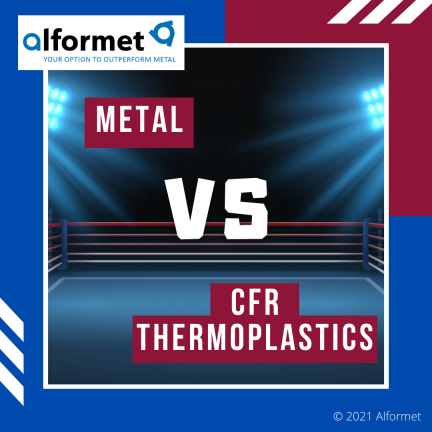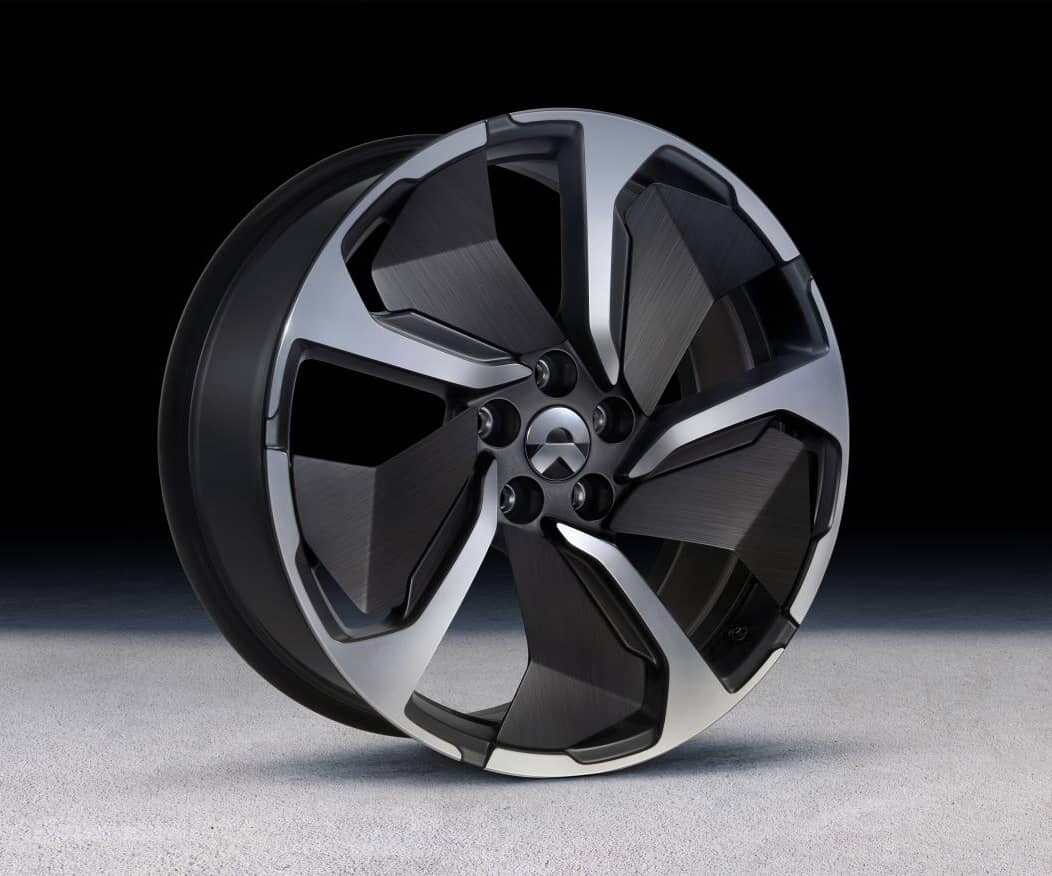Metal versus CFR Thermoplastic tubes
Metal tubes are well established products in the various markets for engineered products. The most common metals used for the production of tubes, are steel and aluminium. These metals have a crystalline structure and by adding other elements (alloying elements) the crystalline structure can be modified to obtain other desired (and sometimes undesired) properties. For instance to protect steel (combination of iron and carbon) against corrosion, you can add chrome and nickel to make inox or stainless steel. The steel becomes (relative) safe from corrosion but is also more difficult to machine.
Also aluminium, which is relatively soft in its pure state, is for many application mixed with other elements like for instance silicon and magnesium. The elements combined with a specific thermal treatment, will result in a stronger and harder material compared to pure aluminium.

Reinforcement of thermoplastic
In fact you can compare the alloying of metals to create a stronger metal with adding fibers to polymers (to create composite material). The fibers serve mainly to strengthen the polymer and the type of fiber bring the option to increase the tensile strength or the E-modulus (stiffness). I will, in the remainder of this blog, focus on the application of thermoplastics as polymer and address the specific advantages related to the thermoplastic (read more in my blog about CFR Thermoplastics).
Metal tubes have a much longer history than CFR Thermoplastic tubes and are therefore better known and more often applied by engineers. Based on my own educational background and from working in the aluminium, copper and lead industry, you are likely to take metal for granted as engineering material. The aerospace industry however, has pushed the development of composite material in general and in thermoplastic composites in particular. I have actually experienced the same kind of transition from steel to aluminium when I started to work at Alcoa and which we currently witness in the shift from metal to thermoplastic composites (mostly for the high demanding applications).
Properties of CFR Thermoplastic material
In short, I share the important ones (see also carbon tube or glass fiber tube):
-
Weight and strength/stiffness: The CFR Thermoplastic material is at least 4 times lighter than steel and about 30% lighter than aluminium. If you can optimize your design for strength or stiffness, the weight saving is likely to be even higher. The strength and stiffness is not as straightforward to compare. That depends on the fiber type but generally it beats steel and aluminium.
-
Corrosion and chemical resistance: Very valuable property of thermoplastics that brings cost saving and limits the maintenance costs. Especially in harsh environment or in contact with aggressive chemicals, CFR Thermoplastic tubes resist without special (surface) treatment.
-
Fracture toughness and fatigue resistance: CFR Thermoplastic materials possess a high toughness and excellent resistance against fatigue (also compared to thermoset composite materials). In other words it can resist varying and cyclic loads better than (most) metals.
- Impact energy absorption: Safety in vehicles is more and more important and in case a crash or collision cannot be prevented, the energy absorption capability at impact is crucial. CFR Thermoplastic material with layer build-up has that capability and beats the common metals in that sense. At impact the energy is absorbed when attempting to separate the layers of reinforced thermoplastic material.
In other words there are many reasons to consider thermoplastic material based on the properties mentioned and more: the material can be recycled easily and our production process is clean using renewable energy!
So go for CFR Thermoplastic tubes and contact us!
Written by Theo Mimpen (March 2021)

Image of wheel made from CFR Thermoplastic (source: Composites World)